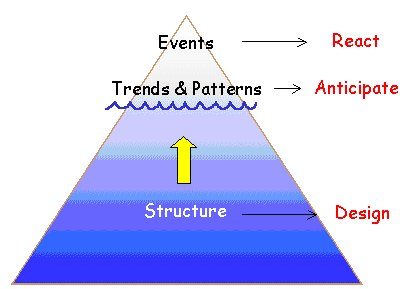

Those decisions add up to the ebbs and flows, successes and problems, of all sorts of systems. People monitor stocks constantly and make decisions and take actions designed to raise or lower stocks or to keep them within acceptable ranges. Stocks allow inflows and outflows to be decoupled and to be independent and temporarily out of balance with each other. Therefore, stocks act as delays or buffers or shock absorbers in systems. Stocks generally change slowly, even when the flows into or out of them change suddenly. If you understand the dynamics of stocks and flows – their behavior over time – you understand a good deal about the behavior of complex systems.Īll models, whether mental models or mathematical models, are simplifications of the real world.Ī stock can be increased by decreasing its outflow rate as well as by increasing its inflow rate.Ī stock takes time to change, because flows take time to flow. A stock, then, is the present memory of the history of changing flows within the system. Stocks change over time through the actions of a flow. Stocks are the elements of the system that you can see, feel, count, or measure at any given time. The elements, the parts of systems we are most likely to notice, are often (not always) least important in defining the unique characteristics of the system – unless changing an element also results in changing relationships or purpose.Ī stock is the foundation of any system. Changing relationships usually changes system behavior.

Interconnections are also critically important. the least obvious part of the system, its function or purpose, is often the most crucial determinant of the system's behavior. one of the most frustrating aspects of systems is that the purposes of subunits may add up to an overall behavior that no one wants. Purposes are deduced from behavior, not from rhetoric or stated goals.Īn important function of almost every system is to ensure its own perpetuation. The best way to deduce the system's purpose is to watch for a while to see how the system behaves. Information holds systems together and plays a great role in determining how they operate.Ī system's function or purpose is not necessarily spoken, written, or expressed explicitly, except through the operation of the system. Many of the interconnections in systems operate through the flow of information. It may exhibit adaptive, dynamic, goal-seeking, self-preserving, and sometimes evolutionary behavior. If you look at that definition closely for a minute, you can see that a system must consist of three kinds of things: elements, interconnections, and a function or purpose.Ī system is more than the sum of its parts. I have yet to see any problem, however complicated, which, when looked at in the right way, did not become still more complicated.Ī system is an interconnected set of elements that is coherently organized in a way that achieves something. The behavior of a system cannot be known just by knowing the elements of which the system is made. It is often possible, therefore, to make a direct translation from systems jargon to traditional wisdom. Modern systems theory, bound up with computers and equations, hides the fact that it traffics in truths known at some level by everyone. The system, to a large extent, causes its own behavior! An outside event may unleash that behavior, but the same outside event applied to a different system is likely to produce a different result. But the system's response to these forces is characteristic of itself, and that response is seldom simple in the real world. The system may be buffeted, constricted, triggered, or driven by outside forces. The third, and last, part of the book felt too vague too me: touching many things without going in-depth.Ī system is a set of things – people, cells, molecules, or whatever – interconnected in such a way that they produce their own pattern of behavior over time. Albeit too basic sometimes, and there is also some unnecessary repetition.

I found Thinking in Systems an interesting and informative book with many examples. Thinking in Systems is an introduction to systems thinking.


 0 kommentar(er)
0 kommentar(er)
